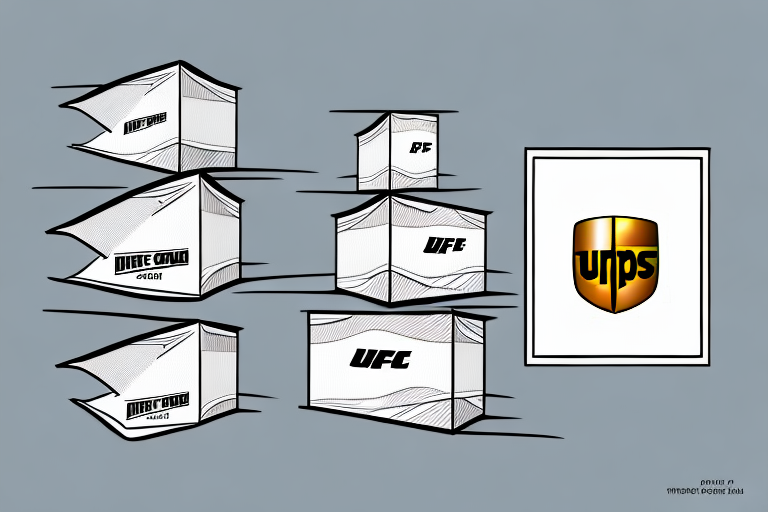Comparing Shipping Rates: UPS, FedEx, and DHL
Shipping is a crucial component of global commerce, enabling businesses to deliver products worldwide efficiently. Selecting the right shipping carrier is a vital decision for business owners, as it impacts cost, speed, and reliability. This comprehensive overview examines the three leading shipping carriers—UPS, FedEx, and DHL—to help you determine which is best suited for your business needs.
Introduction to the World of Shipping and Logistics
Shipping and logistics form the backbone of the global economy, facilitating the movement of goods from suppliers to customers. With hundreds of shipping methods available, businesses often face challenges in prioritizing their shipping strategies. Comparing shipping rates across carriers is essential for cost savings and operational efficiency.
Effective supply chain management is one of the biggest challenges in shipping and logistics. It involves coordinating the movement of goods from origin to destination while ensuring safety and efficiency. Real-time tracking of shipments allows businesses to identify and address potential issues proactively, minimizing disruptions.
Sustainability is increasingly important in shipping and logistics. Businesses are under pressure to reduce their carbon footprint by adopting eco-friendly practices such as using sustainable packaging materials, optimizing shipping routes to lower fuel consumption, and exploring alternative transportation modes like rail and sea freight.
The Importance of Comparing Shipping Rates
As a business owner, maximizing profits while minimizing costs is essential. Shipping expenses can accumulate, especially when sending goods in bulk. Comparing shipping rates across different carriers can lead to significant savings by selecting carriers with more competitive pricing. Regularly evaluating rates also allows businesses to capitalize on promotions and discounts, maintaining a competitive edge.
Beyond cost, comparing shipping rates enables businesses to assess the quality of service offered by various carriers. Reliable delivery, timely arrivals, and the condition of goods upon arrival are critical factors. By reviewing customer feedback and ratings, businesses can make informed decisions based on the experiences of others.
Additionally, analyzing shipping rates helps identify opportunities to refine shipping processes. Understanding the services and pricing structures of different carriers can highlight areas for improvement, leading to increased efficiency and reduced costs. Enhanced shipping strategies contribute to higher customer satisfaction and long-term profitability.
Understanding the Different Shipping Options Available from UPS, FedEx, and DHL
The three leading shipping carriers—UPS, FedEx, and DHL—offer a variety of shipping options tailored to meet the diverse needs of businesses:
- UPS: Offers standard, expedited, next-day delivery, and international shipping services.
- FedEx: Provides similar options to UPS, including specialized services like SmartPost, a hybrid service utilizing FedEx for long-haul transportation and the United States Postal Service for final delivery.
- DHL: Specializes in express, standard, and economy shipping, with a strong focus on international destinations.
Each carrier has unique pricing structures and delivery timelines. Factors such as package size, weight, destination, and the required level of tracking and insurance should be considered when selecting a shipping option. Comparing the different services and rates offered by each carrier is recommended to determine the best fit for your business needs.
What Factors Affect Shipping Rates?
Several variables influence shipping rates, including:
- Package Size and Weight: Larger and heavier packages typically incur higher shipping costs.
- Destination: Shipping to distant or international locations generally costs more than local deliveries.
- Shipping Speed: Faster shipping methods, such as overnight or expedited services, are more expensive than standard options.
- Type of Service: Specialized services like international shipping, overnight delivery, or hazardous material handling can add to the cost.
- Insurance Coverage: Higher levels of insurance increase the overall shipping rate.
- Seasonal Demand: During peak seasons, such as holidays, carriers may raise their rates due to increased demand.
- Weather Conditions: Adverse weather can necessitate alternative routes or additional precautions, impacting shipping costs.
Analyzing the Pricing Structures of UPS, FedEx, and DHL
Understanding the pricing structures of UPS, FedEx, and DHL is essential for managing shipping costs:
- UPS: Utilizes a tiered pricing model where shipping costs decrease as shipping volume increases. They offer various surcharges for services like insurance, delivery confirmation, and Saturday delivery.
- FedEx: Provides flat-rate pricing for select shipping options, alongside tiered pricing based on shipment volume. Additional fees apply for specialized services similar to UPS.
- DHL: Offers different pricing structures depending on international destinations and shipping speed. They also charge extra for services like insurance and express delivery.
Pricing varies depending on whether the shipment is ground or air, with air shipping generally being more expensive. DHL, for instance, emphasizes international shipping with pricing tailored to different regions and delivery speeds. Businesses should meticulously compare pricing options from each carrier, considering their specific shipping requirements, to secure the most cost-effective solution.
How to Determine Which Shipping Carrier is Right for Your Business
To select the most suitable shipping carrier, evaluate your business's specific shipping needs:
- Shipping Volume: High-volume shippers may benefit from tiered pricing and bulk discounts.
- Shipping Destinations: Consider whether you ship domestically, internationally, or both, and choose a carrier with strong coverage in those areas.
- Package Sizes and Weights: Ensure the carrier can handle the dimensions and weights of your typical shipments.
- Budget: Compare rates to find carriers that offer the best value within your budget constraints.
- Service Quality: Assess the reliability, on-time delivery rates, and customer support offered by each carrier.
- Additional Services: Features like package tracking, insurance options, and flexible delivery times can enhance your shipping strategy.
By thoroughly assessing these factors, businesses can make informed decisions that align with their operational goals and customer expectations.
Tips for Negotiating Better Shipping Rates with Carriers
Businesses that regularly ship large volumes can negotiate more favorable rates with carriers by:
- Assessing Shipping Volume: Clearly identify and present your shipping volume to the carrier's sales representative to leverage better pricing.
- Comparing Carriers: Use competitive quotes from multiple carriers to negotiate discounts and secure the best rates.
- Exploring Alternative Methods: Consider shifting from air freight to more cost-effective options like ocean freight if it aligns with your delivery timelines.
- Consolidating Shipments: Grouping shipments can lead to bulk discounts and reduced handling costs.
- Utilizing Third-Party Logistics Providers (3PLs): Partnering with 3PLs can provide access to better rates and more efficient shipping solutions.
Regularly reviewing and adjusting your shipping strategy ensures that your business continues to benefit from the most competitive shipping rates available.
Real-World Examples of Businesses That Have Saved Money by Switching Carriers
Numerous businesses have successfully reduced shipping costs by changing their carriers:
- A small business in California saved over $2,000 annually by switching from DHL to FedEx for international shipments, benefiting from FedEx's competitive international rates.
- Another business reduced shipping expenses by up to 30% by negotiating better rates with UPS, taking advantage of their tiered pricing structure.
- A large e-commerce company saved over $1 million annually by partnering with a regional carrier for domestic shipments, which offered lower rates and faster transit times within their specific region.
These examples demonstrate the potential for significant cost savings through strategic carrier selection and negotiation.
The Role of Technology in Streamlining Shipping Processes and Reducing Costs
Technology plays a pivotal role in optimizing shipping processes and minimizing costs. By automating shipping tasks, businesses can reduce errors, save time, and lower labor expenses. Integrating with shipping carriers allows for seamless management of shipping operations, further enhancing efficiency.
GPS Tracking: Real-time monitoring of shipments enables businesses to make informed routing and delivery decisions, improving efficiency and customer satisfaction.
Data Analytics: Analyzing shipping data helps identify inefficiencies and areas for cost reduction, leading to more effective shipping strategies.
These technological advancements not only streamline operations but also provide valuable insights that drive continuous improvement in shipping processes.
Pros and Cons of Using Each Carrier for Domestic Versus International Shipments
When choosing a shipping carrier, it's important to consider their strengths and weaknesses for domestic and international shipments:
- UPS:
- Domestic: Extensive coverage and reliable ground services make UPS ideal for domestic shipping.
- International: Strong global presence but can be more expensive compared to regional carriers.
- FedEx:
- Domestic: Excellent speed and reliability for domestic deliveries.
- International: Comprehensive global network, though costs may be higher for certain regions.
- DHL:
- Domestic: Less extensive coverage in some countries compared to UPS and FedEx.
- International: Exceptional global reach and expertise in international shipping.
Evaluating the Quality of Service Provided by Each Carrier
Quality of service is a critical factor in selecting a shipping carrier. Key aspects to evaluate include:
- On-Time Delivery: Consistent and punctual deliveries enhance customer satisfaction.
- Package Safety: Low rates of lost or damaged packages indicate reliable handling.
- Customer Support: Responsive and effective customer service can resolve issues promptly.
Researching customer reviews and industry ratings can provide valuable insights into each carrier's performance, helping businesses choose a partner that meets their quality standards.
Comparing Shipping Rates Across Different Modes of Transportation
In addition to comparing carriers, businesses should evaluate shipping rates across various transportation modes:
- Air Shipping: Offers rapid delivery but at higher costs, suitable for time-sensitive shipments.
- Sea Shipping: More economical for large and heavy shipments, though slower than air transport.
- Ground Shipping: Cost-effective for domestic deliveries, balancing speed and affordability.
Choosing the appropriate mode of transportation depends on the specific needs of the shipment, including budget constraints and delivery timelines.
How to Track Your Shipments and Resolve Any Issues That Arise
Effective shipment tracking is essential for ensuring timely deliveries and addressing potential problems:
- Online Tracking Tools: All three carriers offer robust online tracking systems that provide real-time updates on shipment status.
- Claims Process: In cases of lost or damaged packages, carriers offer claims procedures to seek compensation.
Utilizing these tracking tools and understanding the claims process ensures that businesses can maintain visibility over their shipments and mitigate any issues that may occur.
Conclusion
Selecting the right shipping carrier is a strategic decision that can significantly impact a business’s operational efficiency and profitability. By comparing shipping rates, evaluating service quality, and considering factors such as shipping volume, package size, and destination, businesses can choose the carrier that best fits their logistics needs. Whether opting for UPS, FedEx, or DHL, partnering with a reliable carrier that offers cost-effective and timely shipping solutions is essential for enhancing customer satisfaction and driving business growth.




















